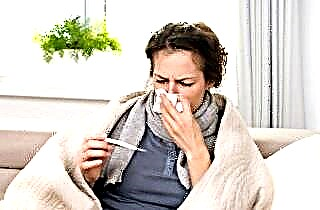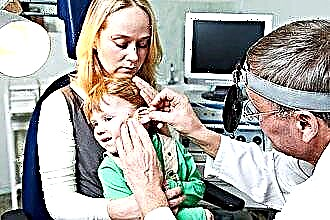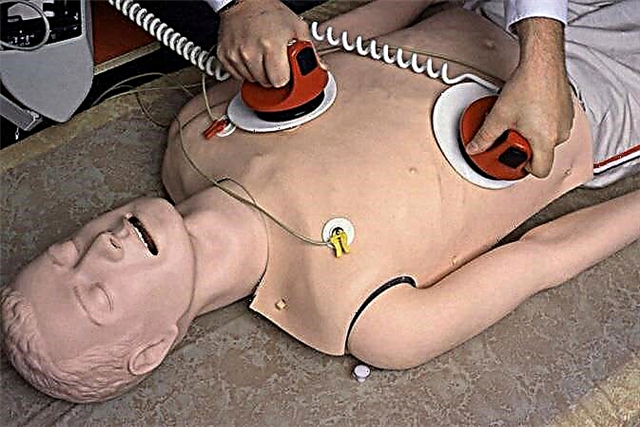Cough can be different, as well as the reasons for its appearance. Most often, it is considered the first sign of a cold. But in many cases, it is one of the manifestations of an allergic reaction. Distinguishing an allergy cough from a normal cough can be difficult. It can also be accompanied by profuse mucous discharge from the nose and even cause a rise in temperature, as with ARVI. But there are several symptoms that clearly indicate that in this case the patient is allergic.
Reasons for the appearance
 It is important to understand that allergic cough is not a disease, but a reaction of the body to some kind of irritant. In this case, the body itself includes protective reactions, for example, dry cough, runny nose, swelling, inflammation of the mucous membranes of the nose and eyes, tearing. In most cases, the allergen enters through the upper respiratory tract. And through coughing and profuse discharge, the body tries to bring it out.
It is important to understand that allergic cough is not a disease, but a reaction of the body to some kind of irritant. In this case, the body itself includes protective reactions, for example, dry cough, runny nose, swelling, inflammation of the mucous membranes of the nose and eyes, tearing. In most cases, the allergen enters through the upper respiratory tract. And through coughing and profuse discharge, the body tries to bring it out.
Anything can be in the role of an allergen:
- pet hair;
- bird feathers;
- pollen;
- various smells;
- household chemicals;
- cosmetical tools;
- houseplants;
- house dust;
- tobacco smoke;
- synthetic fabrics;
- essential oils;
- perfumery and other smells.
There is also a food allergy to a specific product or a whole group. In this case, a severe allergic cough can occur while eating, when the allergen gets into the throat. This often includes rashes or red spots on the skin and other allergy symptoms.
What is the danger
 An allergic cough itself is not dangerous. Especially if it is not strong and occurs infrequently. However, it is a very important signal that must be heeded. If you do not determine what exactly caused the allergy, with constant contact with this substance, the body's reaction will intensify.
An allergic cough itself is not dangerous. Especially if it is not strong and occurs infrequently. However, it is a very important signal that must be heeded. If you do not determine what exactly caused the allergy, with constant contact with this substance, the body's reaction will intensify.
From constant irritation of the bronchi, there can be a gradual development of a very serious disease - bronchial asthma, which is difficult to cure. In addition, severe and frequent coughing attacks injure the delicate mucous membranes of the throat and nasopharynx. Redness and sore throat appear, like with a cold, under which allergies are often masked.
But the greatest danger is not a dry and harsh cough, but severe swelling, which can appear suddenly and completely block the airways.
It is especially important to notice this symptom in time in children. Their airways are much narrower and more sensitive than adults. And if antihistamines are not used in time in the most severe case, respiratory arrest may occur.
How to recognize it
 Even a non-specialist can recognize the allergic nature of a cough, if you pay attention to the main symptoms that characterize it:
Even a non-specialist can recognize the allergic nature of a cough, if you pay attention to the main symptoms that characterize it:
- Sudden appearance. It occurs only in the presence of an allergen. Therefore, the cough often looks like an unreasonable from the outside, especially when it occurs at night. For example, children and adults can often be allergic to wool. If such a person is covered with a woolen blanket, then the cough will not appear immediately, but as the woolen fibers enter the nose when inhaled and begin to irritate the mucous membrane.
- Paroxysmal character. Allergy coughs are usually harsh and violent. Thus, the body is trying to get rid of the allergen - by coughing and sneezing, it pushes it out. Soon the attack subsides, but if contact with the allergen continues, after a while it flares up with renewed vigor.
- Profuse discharge. The body tries to remove the substance that caused the allergy outward by all means available to it. Therefore, the cough is often accompanied by a thin, transparent discharge from the nose. Tears can escape from the eyes from severe irritation of the mucous membranes of the nasopharynx and larynx.
 Dry cough. Since allergic cough is non-infectious in nature, there is no mucus that usually accumulates in the nose and throat with a cold. And this means that the cough itself, as they say, is "dry" - it does not cough up phlegm, but irritation and sore throat may occur.
Dry cough. Since allergic cough is non-infectious in nature, there is no mucus that usually accumulates in the nose and throat with a cold. And this means that the cough itself, as they say, is "dry" - it does not cough up phlegm, but irritation and sore throat may occur.- Lack of temperature. In adults, a rise in temperature is usually not observed. And in young children, it is possible as an additional protective reaction of the body. But it does not rise much - up to 37-37.2 0C. When the coughing attack and allergies pass, the body temperature immediately returns to normal.
Allergy is clearly indicated by the fact that all of the above symptoms appear at the same time and stop very shortly after taking antihistamines.
If the allergy is mild and the irritant is constantly present in the room (for example, house dust or woolen carpet), then intermittent coughing fits can occur for up to several weeks.
 Many adults may be allergic to tobacco smoke. Moreover, it very often occurs in non-smokers who are forced to stay in a smoky room for a long time. The smoke is absorbed into the upholstery of upholstered furniture, household items, and since it contains many harmful chemical compounds, it can provoke severe coughing fits.
Many adults may be allergic to tobacco smoke. Moreover, it very often occurs in non-smokers who are forced to stay in a smoky room for a long time. The smoke is absorbed into the upholstery of upholstered furniture, household items, and since it contains many harmful chemical compounds, it can provoke severe coughing fits.
Therefore, if you notice you have an unreasonable cough that is not caused by infection or hypothermia and / or occurs in repetitive situations, there is a reason to visit an allergist. He will conduct a series of tests and help you find the allergen, as well as tell you which of the drugs will most likely relieve a coughing attack from you.
How to treat
 Since there is no such disease as allergic cough, there is no cure for it. The first thing to start with is blocking an allergy attack to avoid severe irritation and swelling of the upper respiratory tract. In this case, any antihistamines will help: Diazolin, Suprastin, Claritin, Tsetrin and others.
Since there is no such disease as allergic cough, there is no cure for it. The first thing to start with is blocking an allergy attack to avoid severe irritation and swelling of the upper respiratory tract. In this case, any antihistamines will help: Diazolin, Suprastin, Claritin, Tsetrin and others.
In adults, the choice of such medicines is very large; not all are suitable for children. Therefore, before using them, it is advisable to consult a doctor or at least carefully read the instructions. For the little ones, there are antihistamines, which are produced in the form of a syrup, and the classic "Diphenhydramine" is also in candles. This is very convenient, since it is very difficult for a baby to swallow a pill with a strong cough.
But stopping the allergic reaction is only a temporary solution to the problem. If you do not exactly establish the cause that caused the cough, he will definitely come back again and will torment until the allergen is found and eliminated, or until bronchial asthma develops.
Bronchial asthma is already a chronic disease that is difficult to treat and can even lead to the death of the patient if a drug that stops the attack is not at hand.
 Therefore, the second step in treating an allergic cough should be a visit to the doctor. He will help you to accurately determine the allergen and advise what to do specifically in your case, if it is not possible to completely eliminate it, as well as which antihistamines are best for you.
Therefore, the second step in treating an allergic cough should be a visit to the doctor. He will help you to accurately determine the allergen and advise what to do specifically in your case, if it is not possible to completely eliminate it, as well as which antihistamines are best for you.
Home treatments can also be used:
- gargle regularly and rinse your nose with warm water or chamomile decoction, especially after walking and contact with animals;
- drink a decoction of medicinal herbs for 2-3 weeks (mix two parts of the herb of coltsfoot and marshmallow root with one part of oregano, and then pour a tablespoon of the mixture in a thermos with a glass of boiling water and after an hour you can drink the whole thermos a little during days);
- Peel the shell of a boiled egg from the inner film, crush it into fine dust, and then once a day, in the morning, on an empty stomach, dissolve a pinch of the shell in a teaspoon of lemon juice and drink.
But it must be borne in mind that folk remedies must be used for a long time, from several days to several months, in order to have a lasting result. And their use does not guarantee that an attack of an allergic cough will not occur during treatment, so you still need to have antihistamines on hand.
How to warn
 The cause of the appearance can be both strong and long-term exposure to the allergen. So, if dust is constantly in the apartment, then it collects in upholstered furniture, carpets, toys. When a person constantly breathes such air, dust particles begin to accumulate on the villi lining the bronchi and irritate them. Repeated coughing fits begin, during which the body tries to push the dust out - an allergy appears in a previously healthy person.
The cause of the appearance can be both strong and long-term exposure to the allergen. So, if dust is constantly in the apartment, then it collects in upholstered furniture, carpets, toys. When a person constantly breathes such air, dust particles begin to accumulate on the villi lining the bronchi and irritate them. Repeated coughing fits begin, during which the body tries to push the dust out - an allergy appears in a previously healthy person.
The same thing happens in adults who work in dusty rooms, in hazardous industries, with various chemicals or paints and varnishes. From constant exposure to harmful substances, an allergic reaction to them gradually develops. The body, as it were, signals in such a way that proper protective measures are not taken.
But there are simple prevention methods that can prevent the development of allergies:
- It is necessary to maintain cleanliness in the house, ventilate the room well every day, and do high-quality wet cleaning at least 2-3 times a week.
- All objects in which dust can accumulate should be regularly cleaned with a vacuum cleaner, carpets - knocked out or hand over for professional cleaning.
- Make sure that there is no mold in the house - its spores are not only a strong allergen, it can lead to the development of serious broncho-pulmonary diseases.
 If you have pets, you need to provide thorough grooming of their fur - regular combing, shaving, trimming.
If you have pets, you need to provide thorough grooming of their fur - regular combing, shaving, trimming.- Pets should not be allowed in the bedroom, and even more so on the bed in which the child sleeps - it must have a specially designated place, which must be cleaned at least once a week.
- Before the first use of any cosmetic products, you need to make a test for their individual intolerance, and if you already know that you are allergic to certain components, carefully study the composition before buying.
- Try to wear clothes made from high-quality natural materials, not dyed in too bright colors (they can contain strong allergens).
- Choose only high-quality toys for the child, from trusted manufacturers, made from environmentally friendly and safe materials for the baby.
- When cleaning a room, try to use a minimum of household chemicals, store them in a well-closed container and wash your hands thoroughly after handling them.
For adults working in constant contact with possible allergens, we can only recommend strict adherence to safety measures and the mandatory use of personal protective equipment.
Remember that once an allergic cough appears, it can be a lifelong problem. And preventive measures are much easier and cheaper than long-term treatment.

 Dry cough. Since allergic cough is non-infectious in nature, there is no mucus that usually accumulates in the nose and throat with a cold. And this means that the cough itself, as they say, is "dry" - it does not cough up phlegm, but irritation and sore throat may occur.
Dry cough. Since allergic cough is non-infectious in nature, there is no mucus that usually accumulates in the nose and throat with a cold. And this means that the cough itself, as they say, is "dry" - it does not cough up phlegm, but irritation and sore throat may occur. If you have pets, you need to provide thorough grooming of their fur - regular combing, shaving, trimming.
If you have pets, you need to provide thorough grooming of their fur - regular combing, shaving, trimming.

